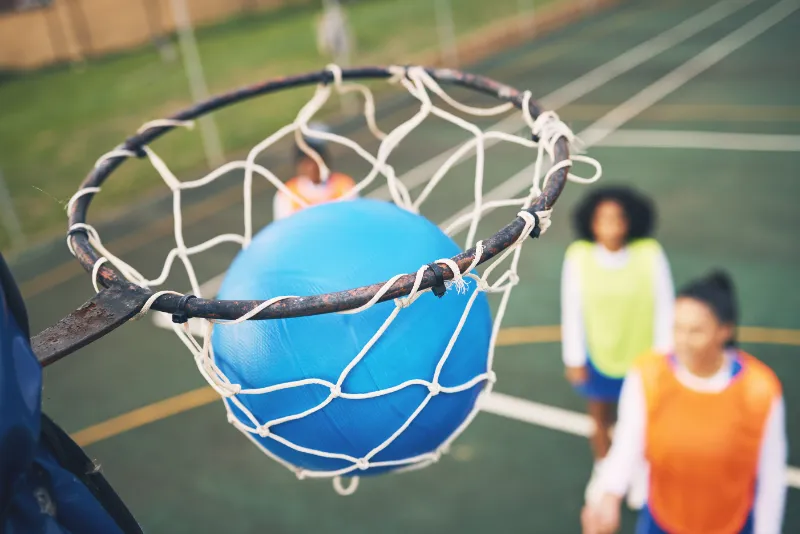Injury Prevention Top Tips For Netballers

Improving Lower Limb Strength
Ankle stability is very important in netball as the game includes a lot of stop, start and pivoting movements.
Ankle injuries are very common in netball and the more ankle injuries you have the worse your ankle stability becomes. Ways to build on your ankle stability include:
- Jumping drills / hopping drills
- Single leg balance work (as simple as standing on a cushion)
- Proximal control (knee and hip control)
- Taping may also provide short term benefit.
In netball it is important to have good eccentric control (muscles ability to lengthen while contracting), this is because as you land your quads have to do this movement to stop you as you land. If you have poor eccentric quad control then you’re at greater risk of injury as you’re not able to control the movement as effectively. Ways to improve this include:
- Single leg squat, ensuring you keep your knee straight (as shown in video below)
- Step down (as shown in video below)
- Leg press
Hip strength is also really important when it comes to lower limb control as your hip is responsible for control laterally (sideways) and if your hip is weak then it has a knock-on effect on the rest of your leg, again predisposing you to injury. Ways to improve your hip strength:
- Clams (as shown in video below)
- Crab walks with a resistance band (as shown in video below)
- High step ups (as shown in video below)
- Lunges
Improving Upper Limb Strength
A good, stable shoulder is also important. The most important muscle group is your rotator cuff – these muscles give your shoulder the power it needs to generate force when you’re throwing. If this muscle group is weak then the chances of muscle strain is increased.
Stretches For Lower Limbs
Stretches are important to keep muscles flexible, strong and healthy, whilst also ensuring maintenance of good joint range. Stretching also increases the blood flow to the area that you’re stretching, which increases nutrients to the areas and helps remove lactic acid. Stretching is also known to reduced DOMS (delayed onset muscle soreness), which you commonly get after strenuous exercise.
It is important to stretch all our main muscles, which include;
- Downward dog to spider man (dynamic stretch)

- Crescent to hamstring stretch (dynamic)

- Side to side lunge with reach (dynamic)

- Hamstring stretch (static stretch)

- Quadricep stretch (static stretch)

- Calf stretch (static stretch)

- Glute stretch (static stretch)

Plyometric Work
During netball there is a lot of taking off and landing, therefore you need good muscle power and muscular endurance to generate force consistently throughout the game.
Some plyometric exercises include:
- Box jumps – jumping onto a box, the higher the better
- Lateral lunges with weights
- Scissor jumps
- The dot drill
Fundamentals To Netball Injury Prevention
Alongside an adequate warm up and cool down, the correct nutrition and footwear, the fundamentals to netball injury prevention, as discussed in this article, require achieving the following:
- Good strength globally but most notably in the hip, quads and shoulders
- Great ankle stability
- Good balance
- Good muscle power and muscular endurance
- Flexible muscles with a good joint range
Towards these outcomes, this article has put forward a selection of the best stretches and strengthening exercises netballers should be incorporating into their training routine.
For more information, or to discuss any netball-related injuries, get in touch to book an appointment at our physiotherapy clinic.

